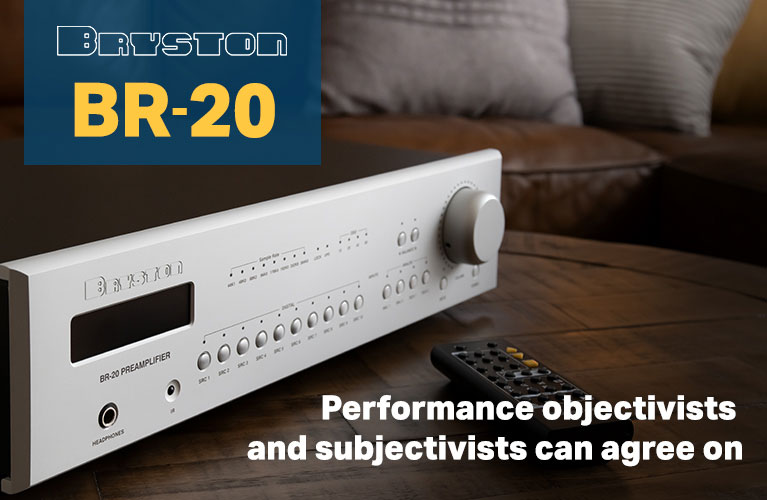Originally, I had no intention of writing about Music Hall’s a15.3 integrated amplifier for this column, even though its price (only $549, all prices in USD) makes it ideally suited. In December 2020, the a15.3 was sent to us by Music Hall’s Canadian distributor, Motet Distribution, for James Hale to review, which he did in February 2021 in his SoundStage! Xperience “Art+Tech” column—and that should’ve been that.
My mind changed after I read James’s write-up on the a15.3 and Diego Estan measured it in our electronics lab. The combination of James’s high praise and the admirable performance on the test bench practically begged me to cover the a15.3 to ensure that “System One” readers are aware of it. So here we are . . .
Description
It’s important to know that Music Hall, a company that is best known for its low-priced, high-value turntables, does not build the a15.3, nor, indeed, any of their electronics. But that’s not a secret since it says so right on the electronics page of the company’s website: “The factory that manufactures our components is a small, family owned business run by a former physics teacher. A few years ago Chinese teachers earned little, so Mr. Li, in order to supplement his salary, started making [hi-fi equipment]. This small concern developed into one of the most sophisticated manufacturers in southern China.”
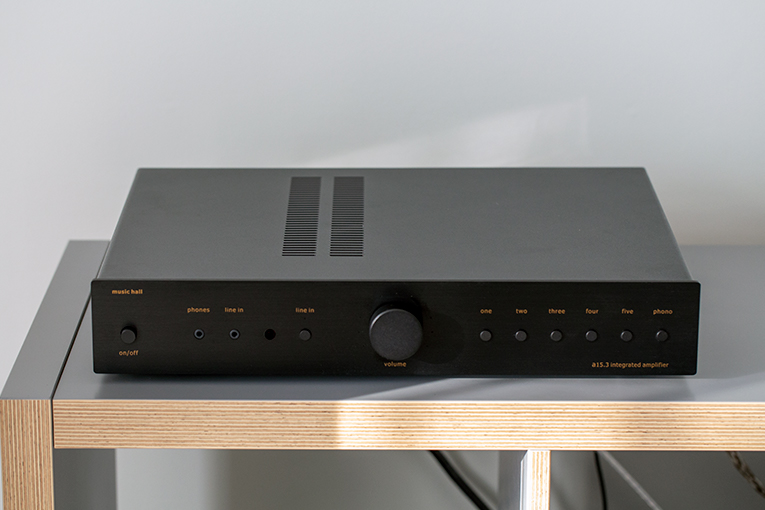
It's also worth knowing that the a15.3 isn’t new—it’s been on the market for about eight years. But the fact that it’s “old” doesn’t make it irrelevant, as you’ll soon find out.
The a15.3 measures 16.9″W × 14.3″D × 3.1″H and weighs just shy of 15 pounds. But even though it’s fairly slender and quite light, it doesn’t feel flimsy. This is down to the all-metal construction of its casework, which includes a faceplate that’s about 3/16″ thick.
The case and front-panel controls come in one color, black, which gives the a15.3 a utilitarian, business-like appearance, though the gold color of the front-panel labeling helps to spiffy it up a tad. The remote control that came with our unit had a silver-colored face over the area where the buttons go, and black everywhere else, though photos on Music Hall’s site show a remote that’s all black, so I’m not sure what’s up with that—or what you might get if you buy one.
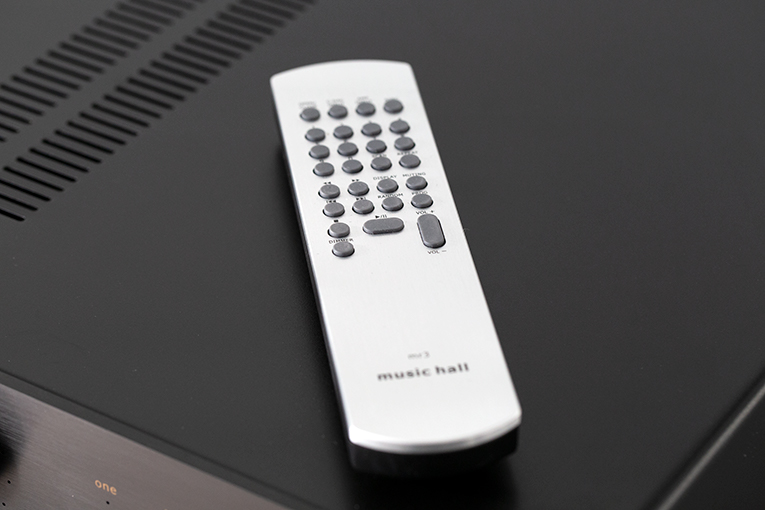
On the a15.3’s backside are good-quality binding posts suitable for spade, banana, or bare-wire speaker-cable connections; a pair of single-ended (RCA) preamplifier output jacks; six pairs of single-ended (RCA) input jacks; a turntable ground post; a voltage-selector switch; and an IEC-compatible power-cord inlet, so an aftermarket power cord can be used if someone doesn’t want to use the stock one (which I used). Of those six sets of inputs, five are for line-level connections (i.e., CD player, tuner, tape deck, etc.), while the other is for a turntable—the a15.3 includes an onboard moving-magnet phono stage.
What’s missing from the a15.3 compared to some of the latest integrated amplifiers is a built-in digital-to-analog converter (DAC), as well as some modern features such as Bluetooth and network connectivity. To me, these omissions are excusable since this is really a minimalist integrated amplifier that Music Hall likely specified and brought to market to complement the company’s core business of selling high-value turntables. Plus, eight years ago, having a DAC in an amp, let alone Bluetooth and network connectivity, wasn’t a big thing. But if you want to add a DAC or some other source, there are plenty of line-level inputs available on the a15.3.
Smack in the center of the front panel is the knob for volume control, which Diego surmised isn’t attached to a potentiometer, as is often the case in lower-priced integrated amps. His measurements revealed excellent left- and right-channel matching (a miniscule 0.08dB of channel mismatch at worse to an excellent 0.02dB at best). Typically, potentiometers aren’t that accurate. Instead, the knob, which turns smoothly with only modest resistance, provides what Diego described in his measurements write-up as “digital control over a proprietary or integrated analog-domain volume circuit.”
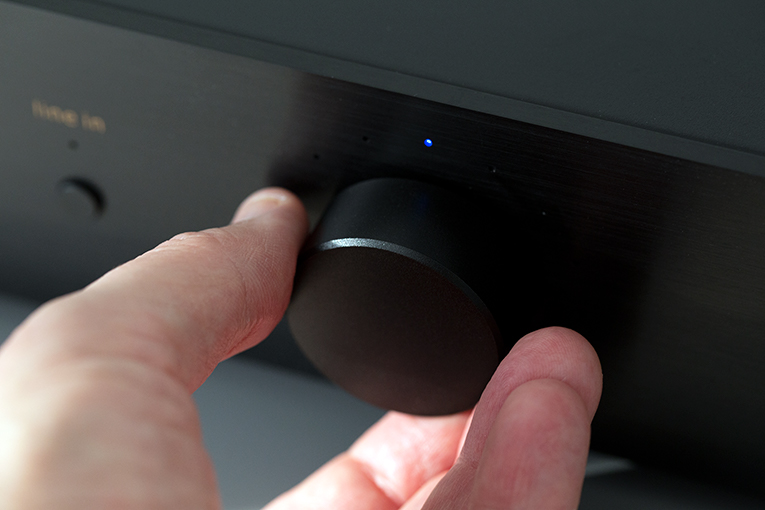
Surrounding the knob in a ring are 11 tiny, blue LEDs that individually light up (i.e., only one is lit at any time) to show you the approximate volume level. It’s approximate because the volume-control circuit, which Diego found offers increments or decrements of 4, 3, 2, or 1dB, depending on where you are in its operating range, has more than 11 positions. Therefore, you can turn the knob just a little bit and change the volume level, but the lit LED might not change from one to another until you turn it even further. Even so, like Spinal Tap’s Marshall heads, this amp goes to 11.
To the right of the volume knob are six input-selector pushbuttons, corresponding to the RCA inputs on the back panel. Immediately to the left of the volume control is another pushbutton, which selects the a15.3’s seventh analog input—a 1/8″ mini-jack, which is next to the pushbutton and is for connecting the analog output of, say, a portable music player. To the left of the 1/8″ input jack is a 1/8″ headphone output jack. When headphones or earphones are plugged in, the speaker outputs automatically mute, and unmute on disconnection. I tried my Pryma 01 headphones with the a15.3 and found the performance to be good—more than enough power for the headphones to get to high listening levels, full bass extension with visceral impact, well-extended and clean highs, and great clarity across the audioband. Although I wouldn’t buy the a15.3 to use it just as a headphone amplifier, it’s nice to have that option from time to time. Lastly, on the far left of the front panel is a pushbutton for powering up the a15.3. When turned on, a tiny, blue LED that looks the same as the ones around the volume control lights up on the right-hand side of the front panel.
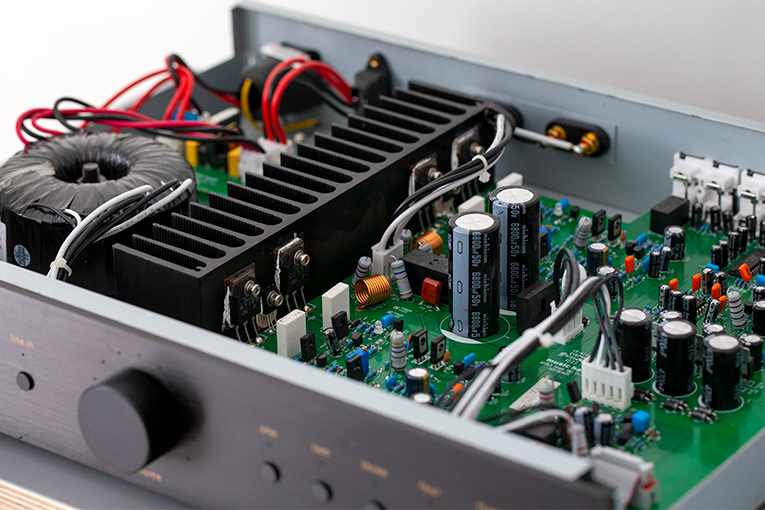
The a15.3 has a class-AB amplification stage that Music Hall rates at 50Wpc into 8 ohms or 75Wpc into 4 ohms. Diego’s measurements showed that these are conservative specs—he found 63Wpc into 8 ohms and 86Wpc into 4 ohms before hitting 1% distortion, which is the typical distortion limit used when determining maximum output power. So the a15.3 is more powerful than its spec sheet claims. Diego’s tests also showed that the a15.3 can easily drive a punishing 2-ohm load, which could come in handy with hard-to-drive speakers. Music Hall claims a 90dB signal-to-noise ratio, which also turned out to be conservative—Diego measured, at worst, 96.2dB (20Hz to 20kHz) from both the left and right channels (for signal-to-noise ratios, the higher the number the better). I could go through more of the measurements, but the real takeaway is what I mentioned before—the a15.3 measured admirably in our tests.
Setup
I always set up the components that I write about in this column in my living room, which is roughly 18′ long by 15′ wide. They’re strewn across one of the shorter walls. When I was evaluating the NAD PP 2e and Bellari VP549 phono stages for my January “System One” installment, I was using NHT C 3 Carbon Fiber and Q Acoustics 3030i standmounted speakers. Right after, I changed to Sonus Faber Lumina III floorstanders, and these were what I used with the a15.3. At $2199/pair, they’re a bit more expensive than most of the gear that features in my “System One” column, but they’re really for a special system I’m going to write about in this column in the months to come. However, there was a bonus in that the Lumina IIIs were a somewhat challenging load for the a15.3—our impedance measurement corroborates Sonus Faber’s claim that the Lumina III presents a 4-ohm nominal impedance. The measurement also showed dips to just above 3 ohms at 125Hz and to just below 3 ohms around 500Hz. This lowish overall impedance and the dips can tax some amplifiers. Connecting the speakers to the a15.3 were the same QED XT25 speaker cables that I wrote about in October 2019.
For LP playback, I used the Pro-Ject Audio Systems X1 turntable that I wrote about in September 2020, which I attached to the a15.3 with its stock phono cable. For digital playback, I used a Chromecast Audio wireless streamer, but instead of connecting it to the amp with a mini TosLink digital cable, which is what I do with integrated amps that have a built-in DAC, I connected the Chromecast to the a15.3 with a 1/8″-to-RCA AmazonBasics analog cable. The 1/8″ connector went into the Chromecast and the two RCA connectors were inserted into a set of left and right inputs on the a15.3’s backside.
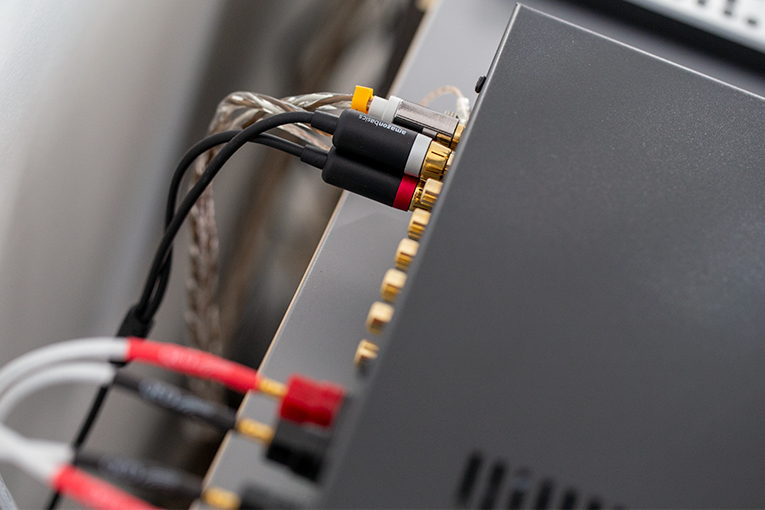
Using an analog cable with the Chromecast Audio forces it to use its own built-in DAC, which sounds surprisingly good for the paltry $35 the Chromecast cost when it was available (it was a bad move by Google to discontinue it, in my opinion). Serious audiophiles will probably demand a better DAC, but there’s no need to pay an arm and a leg for it. Just like I found good phono stages for under $200 (the aforementioned NAD and Bellari), there are good DACs for around $200 as well. However, the Chromecast was fine for this evaluation since I did my critical listening with vinyl, which seemed fitting given Music Hall’s focus on turntables.
Sound
My wife kicked off the testing of the a15.3 on the first Saturday of February as she was cleaning around the house. Since this system is in the living room, more or less centrally located in my home, she likes to listen to it when she cleans—and when she does, she plays it loud, so she can hear it all over the house and above the sound of the vacuum when it’s running. There’s no use playing LPs for this kind of listening, since she requires varied music that plays uninterruptedly for a couple of hours. That day she cued up a playlist of hits from the 1980s that she found on Tidal, and streamed it through the Chromecast.
I was listening as well for about half an hour from two floors up (where my main system is located) and admired how clean and lively the sound was, even from that distance. I also noted how the bass was much deeper than when I had the NHT and Q Acoustics standmounted speakers in the system. After another 15 minutes, I also noticed that she seemed to be playing this setup louder than she usually does, so I went downstairs and into the living room to investigate. The sound-pressure levels were way higher than what I’d use if I were critically listening—she had it playing dance-party loud. But when I looked at where the volume control was positioned, the LED at the top center was lit up, so it was about midway—meaning the amp probably wasn’t even approaching full power output.
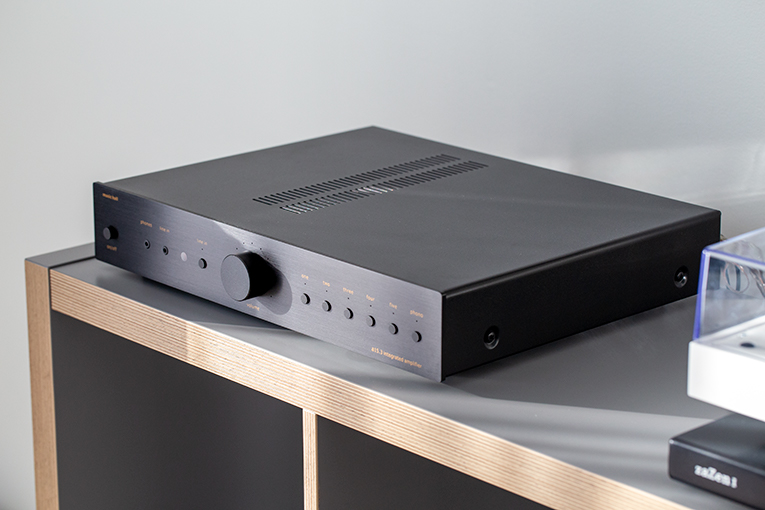
Later that day, I began my critical listening with vinyl, which carried on over the next couple of weeks. During this time I played my go-to list of LPs—all originals from the years they were released—that I often listen to with this system. Among them were the Eagles’ Hotel California (LP, Asylum Records 7ES-1084), which came out in 1976, when I was 12 years old; Dire Straits’ Communiqué (LP, Mercury Records SRM-1-3791) and Pink Floyd’s The Wall (LP, Columbia Records PC2 36183), which arrived three years later, so 1979; George Winston’s Winter into Spring (LP, Windham Hill Records 91019), which was released in 1982; Sade’s Promise (LP, Portrait Records FR 40263), from 1985; and Bruce Springsteen’s Tunnel of Love (LP, Columbia Records OC 40999), released in 1987.
First on was side 2 of Tunnel of Love, which opens with the title track and sonically set the stage for what I heard on every LP that followed. Before the needle dropped, with the phono input selected, the inherent hiss from the amp was on par with other integrateds I’d reviewed in this system, such as the Schiit Audio Ragnarok 2 Fully Loaded ($1799) and Audiolab 6000A ($999.99)—noticeable if you put your ear within inches of a speaker’s tweeter, but nonexistent once you pull away. With one of the line-level inputs, the hiss went down by at least half, so the a15.3 is a pretty quiet design.
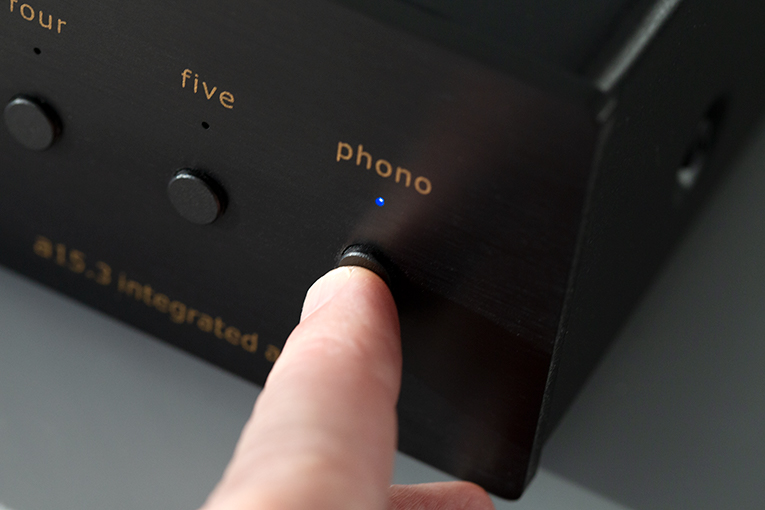
When the needle dropped, what sprung forth was a lively, visceral sound the likes of which I never expected from such a low-priced integrated amplifier. The drums in the title track’s opening had strong impact and good bass weight, the high-frequency carnival-type sounds rang through super-clearly, and Springsteen’s vocal sounded wholly natural and easy to pick out in the mix. The sound was also dynamic as hell, yet there was an ease to what I heard that indicated that the a15.3 wasn’t breaking a sweat while driving the Lumina IIIs. When I looked at the volume level, the LED at 11 o’clock was lit, so I had lots of room to increase the level if I wanted to—but it was already loud enough.
Though the a15.3 drove the Lumina IIIs with ease, that’s not what sold me on it. Instead, it was how much detail flowed through it and out of the speakers. By the time I got to the end of my favorite song on Tunnel of Love—“One Step Up,” the fourth track on side 2—I was blown away by the musical nuances and spatial cues that were reproduced by the a15.3. They allowed me to hear deep into the recording—the soundstage was spread out realistically to just beyond the outer edges of the speakers, then back several feet, giving an illusion of depth that extended beyond the wall behind the speakers.
When I play “The Sweetest Taboo,” from Promise, I always listen for how well delineated the individual raindrops are at the song’s start, as well as how far away both the rain and the opening drum sounds seem to be. If you imagine a straight line drawn between the speakers’ front baffles, the rain and the drums should sound as if they’re about 8′ behind that line. That’s exactly what this setup reproduced—sonic images of the rain and drums that went several feet past the wall behind the speakers. Then, when singer Sade Adu’s vocal came in, it was just like it was with Springsteen’s on Tunnel of Love—ultraclean and easy to pick out from the mix. All told, first-class sound.
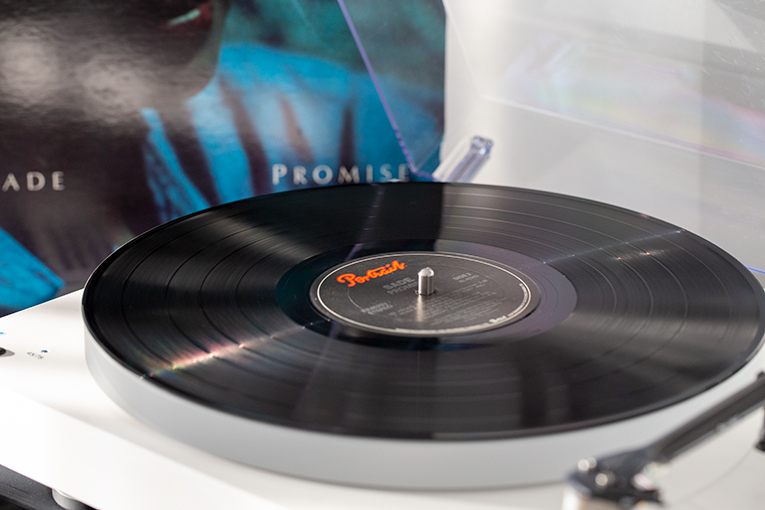
Then I moved to “Goodbye Blue Sky,” track 1 of side 2 on The Wall, which starts with the sound of birds, an airplane, and a child’s voice (Harry Waters, son of Pink Floyd cofounder Roger Waters). The speakers projected the birds’ sounds in my room so cleanly and so free of the speakers’ cabinets that the word that popped to mind was “feathery”—seriously, it was. David Gilmour’s acoustic guitar, which comes in right after Harry Waters says, “Look, Mummy, there's an aeroplane up in the sky,” was reproduced with great detail and a really natural sound.
By the time I got to Winter into Spring, I already had the impression that the a15.3 was a very good entry-level integrated amplifier. But after I played Winter into Spring not just once, but over and over again—more than a dozen times over two weeks—I became convinced that it’s not just very good, but great because of the way Winston’s piano playing always sounded exceptionally clear and extremely detailed, yet with no sonic flaws that would give away that this is an inexpensive amp. Oftentimes, inexpensive integrated amplifiers sound coarse, brittle, or edgy, probably because they’re built to a price point and this can compromise quality. But this one sounded as clean as ones costing many times more. It also had the delicacy necessary when Winston played softly, as well as power and robustness when he really laid into the keys. If forced to pick just one track from the album to illustrate the delicacy and power I’m talking about, it would be “Rain/Dance” (aka “Rain”), which opens side 2 and runs for ten minutes and ten seconds. From beginning to end, I was enthralled each time I played it by the realism of each key strike, whether struck lightly or firmly, and how easily I could hear the lingering decays.
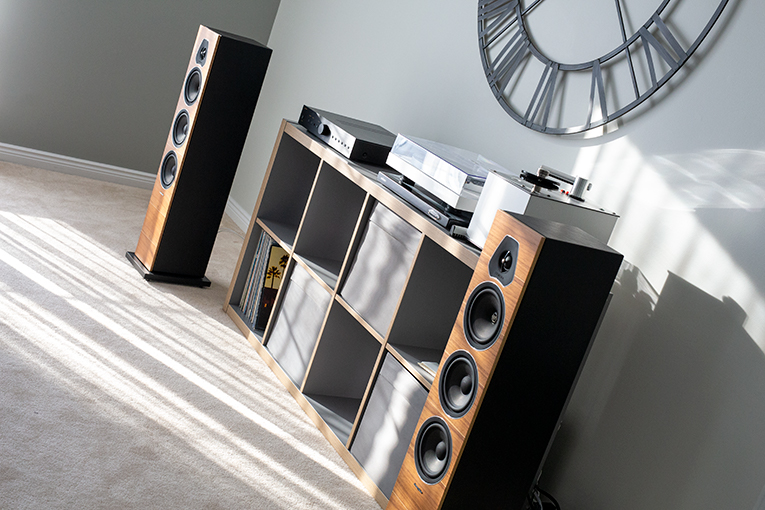
Granted, what I’m describing isn’t all the amp’s doing—this is a system, after all. But when you consider that the turntable I was using cost more than $1000 and the speakers are priced a bit north of $2000, the a15.3 amplifier, at just $549, could be considered the star attraction because of the way it fit right in.
Conclusion
The a15.3 lacks a built-in DAC and other modern features you can find on some competitors’ integrated amps, but that doesn’t limit its appeal—this amp is best suited to a system where the turntable rules the roost and digital playback doesn’t exist or is something you simply add on. So with that in mind, the a15.3 offers a lot: good build quality, decent styling, more than enough inputs for connecting source components, a well-implemented volume control, a handy remote control, a great-sounding moving-magnet phono stage, a very good headphone output, enough clean power to adequately drive most speakers, and a retail price of only $549 that makes it a steal.
Prior to the arrival of Music Hall’s a15.3, a number of brand names would’ve come to mind if I had been asked for a recommendation for a great integrated amplifier priced under $1000, but Music Hall wouldn’t have been one of them. Even though the a15.3 has been around for about eight years, I simply had no idea that the company was offering an integrated amp of this caliber. Talk about a big surprise. Now, if someone should ask, Music Hall’s a15.3 would be on the tip of my tongue.
. . . Doug Schneider
das@soundstagenetwork.com






















